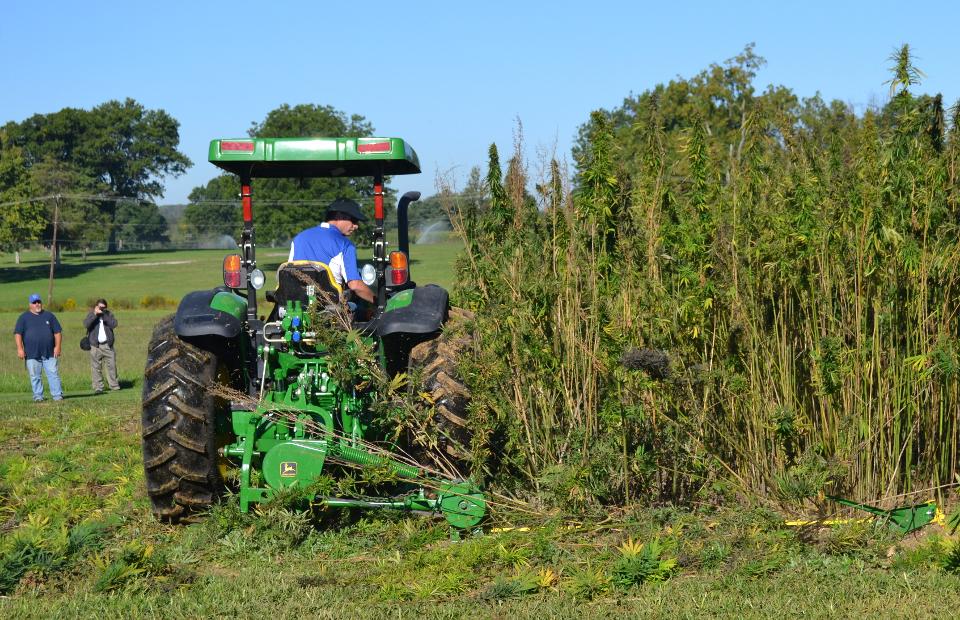What Farmers Need to Know About Harvesting Hemp
In 2017, hemp industry sales almost reached $700 million in the United States.
Hemp plants produce fibers and seeds that can be used for clothing, foods, textiles, and more.
If you are interested in growing hemp, you may want to do further research to avoid wasting money and time.
Scroll down to learn the top tips for harvesting hemp and tips for producing CBD from your plants.

1. Fibers or Seeds?
One of the best tips for harvesting hemp is to only harvest fibers or seeds.
Doing them both at the same time is not recommended because they mature at different times of the year. Hemp fibers are typically used to make clothing, ropes, and textiles.
Seeds are much different and can be used in smoothies. It can also be eaten raw or used as a replacement for bread crumbs. Hemp seeds are highly nutritious and are often compared to flax or chia seeds.
2. Start When You See the Seeds
The best time to begin harvesting hemp fibers is when you begin seeing the seeds develop.
The seeds often grow in a bunch near the base of the leaves and are typically a brown color. Waiting too long will turn the hemp fibers course, resulting in the male fibers dying soon after pollination.
Timing is everything when it comes to growing your hemp plants. Don't wait too long to accomplish steps if they have a recommended time.
3. Use the Right Tools
Once the hemp plant is grown, you will have to consider harvesting the plant.
To harvest hemp, you will need a sickle or a sickle-bar mower. It is recommended to cut at the very base of the plant or stem that you are harvesting. The sickle-bar mower is best for when you have mass quantities that need to be cut down.
Throughout the entire growing process, you may discover that you require other tools to complete the job. Take a look at our Farmer's shopping list to ensure that you are prepared.
4. Let the Hemp Rest
After cutting down the hemp with a sickle or sickle- bar mower, you will have to let the hemp rest before proceeding.
It is recommended to leave the stalks of hemp in the field for about 5 weeks so that the outer layer can rot. After the outer layer begins to rot, it will be easier to separate the fibers. This entire process is called retting and is an important step in harvesting hemp.
It is also important that during this phase, the outdoor temperature doesn't go below 40 degrees Fahrenheit or above 104 degrees.
5. Getting the Fibers
The hemp has been cut, rested and now needs to dry out before getting broken up.
If you are having a difficult time trying to dry the hemp, put it in an area with less than 15% moisture that is also cool and dry. You should also keep the stalks in an upright position to fully help them separate.
Once the stalks are dry, you can begin breaking them apart to separate the fibers. This step is typically done by using a decorticator machine.
6. Harvest Seeds Before They Bloom
If you are planning to harvest your hemp for the seeds, and not the fibers, you will need to do so around October.
Seeds mature at different times of the year and many of them have likely fallen off by this point. You can feel the husks and looks for hard seeds that are still inside. The higher up the seeds are on a plant, the longer it will take for them to fully mature.
Many people recommend leaving the fallen leaves in the soil so that you can use them to fertilize for the next year.
7. Cut for Seeds in the Heat
When the time comes to cut off the seeds from your hemp plant, you should do it on a hot day.
The best weather to reap the tops of your plants is on a dry and sunny day. We have come up with a list of the best agriculture weather sources that you can use to plan your harvesting.
You should cut below the lowest grouping of seeds on the plant. A dual-beam cutter is recommended if you are cutting mass quantities.
8. Keep the Seeds Dry
After you have fully harvested the seeds, you will need to properly store them.
Seeds should be kept in an area with low humidity. The temperature should be between 32 and 40 degrees Fahrenheit. The container they are placed in should be deep and have a secure lid.
Areas that are warm and humid can either germinate or bust open the seeds, making them unusable.
Harvesting Hemp for CBD Products
If you are wanting to grow hemp for the CBD, the following tips are crucial.
Many people don't realize how thin of a line is between hemp with THC and CBD. The higher traces of THC in hemp, often result in a greater chance for CBD potential.
Those who want to produce large amounts of CBD should keep the plants in a well-vented area that offers good airflow. Many people place their plants under a canopy to help keep them healthy. You can grow them in soil or even use hydroponic methods.
Time to Get Some Green Growing
There are many important steps to follow when harvesting hemp.
Utilizing the tips above can help you grow larger amounts of hemp. It can also ensure that your plants are healthy and can produce CBD. Don't forget to watch out for temperatures and humidity levels throughout each stage, this is often where problems arise.
Take the time to review local laws and regulations so that you can avoid any issues.
Be sure to check out our barn blog for the latest agriculture and farming trends!
 US Dollars
US Dollars
 Canadian Dollar
Canadian Dollar
 Australian Dollar
Australian Dollar
 Euro
Euro

